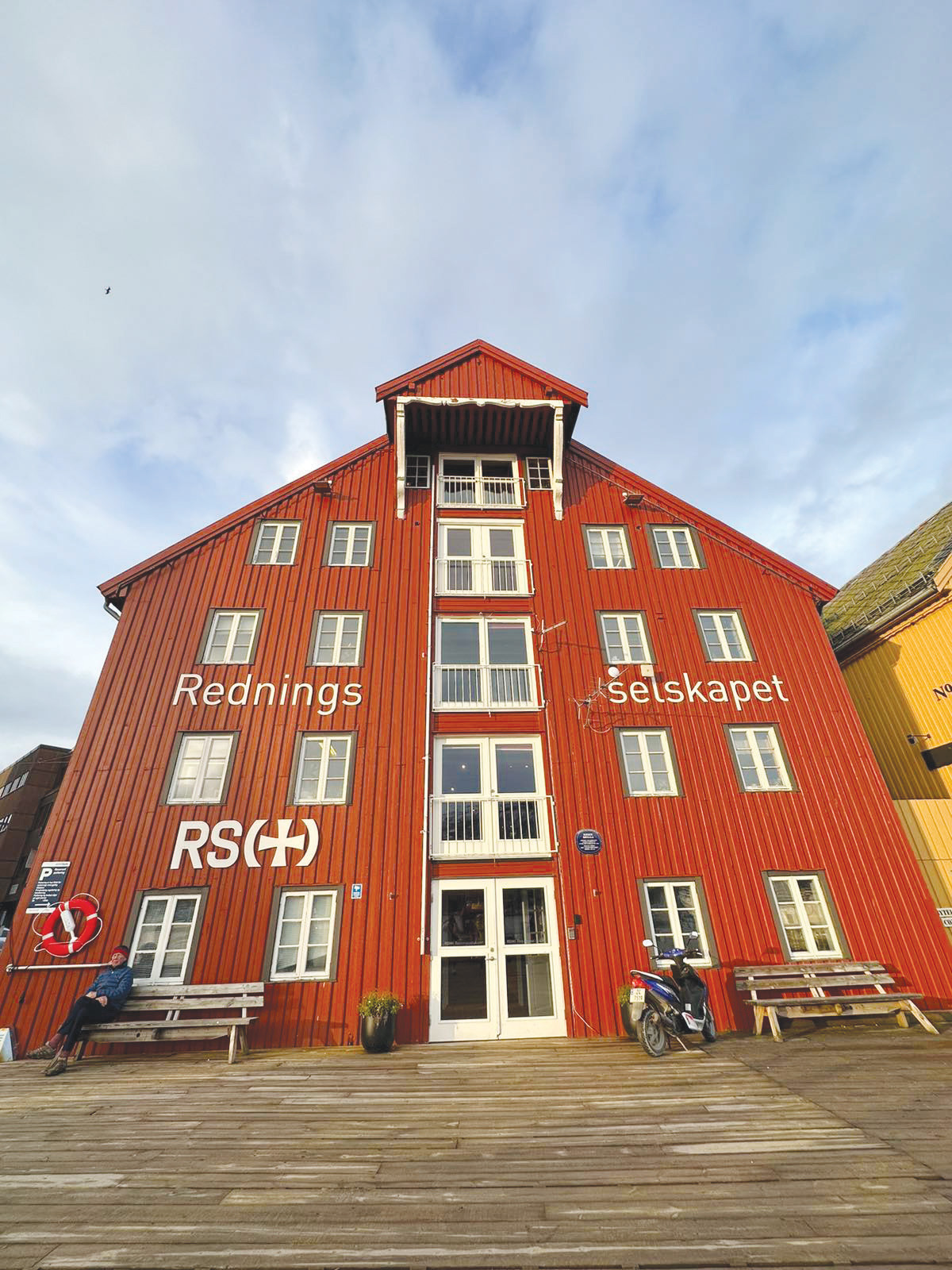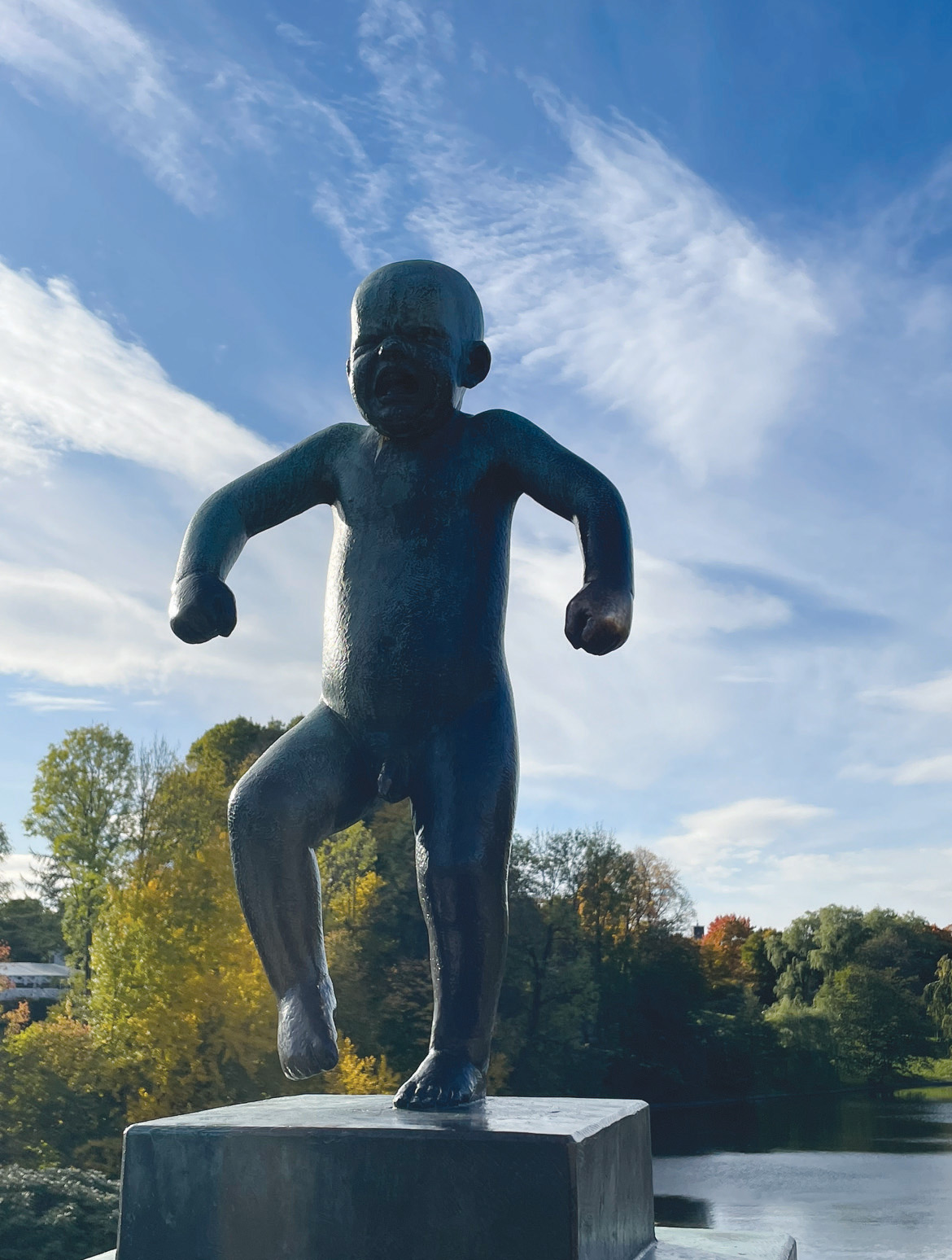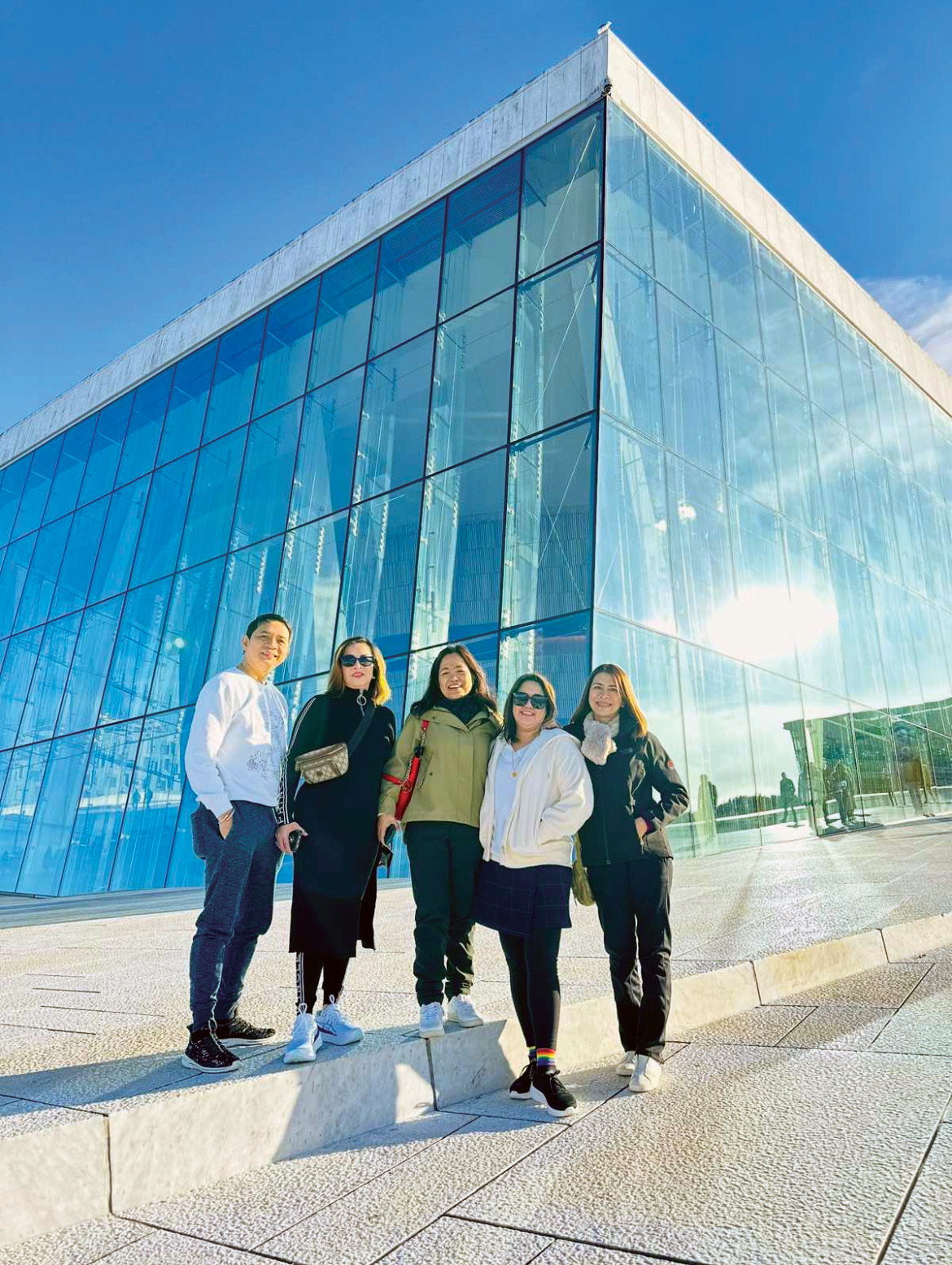Why Norway should be on your travel bucket list
The Philippines is one of the six countries—Germany, Sweden, Somalia, Eritrea, Lithuania—with a significant number of migrants in Tromsø. Poland tops the list
At A Glance
- Norway is one of the very few locations on earth, where the sunset merges into the sunrise, with no darkness in between.

Norway, one of the Scandinavian countries, may not be in most travel bucket lists, including mine, but it should be.
A luxury destination
There are good reasons though for this overlook, depending on several factors. For one, this northernmost country, located in a faraway land in the Arctic, is a luxury destination.
Eduardo Ygot, a Filipino tour manager and guide based in Hilsinki for the Metro Pacific Investments Corp. (MPIC) editors’ trip, can attest to the fact that Scandinavia is the most expensive in Europe for tourists. The small states that make up the Arctic, or the most northernmost region of the Earth, are one of the world’s wealthiest and happiest! They don’t need tourists to sustain their lifestyle.
According to the net, Scandinavia is a group of countries in northern Europe that includes Denmark, Norway, and Sweden. In most references, Scandinavia also includes Finland, Iceland, and the Faroe Islands.
Norway itself is home to some of the world’s northernmost landmarks, famous for its successful sovereign wealth fund due to its abundant oil reserves, home to the famous salmon, a land of sculptures, hub for skiers, and Northern Light hunters.

It is also dubbed as the “land of the midnight sun” because it is one of the very few locations on earth, where the sunset merges into the sunrise, with no darkness in between. It’s incredible, but in this part of the world, the sun does not set in the summer months, but it only shines a few hours a day in winter.
Norway is crucial to the Philippine economy. It employs thousands of Filipino seafarers in its ocean-going flag carriers. The country is host to peace negotiations between the Philippine government and the National Democratic Front.
Closer to the sky
This snowy country, especially its capital, Oslo, is also different from the major European cities. For one, it’s a very safe city. One famous attraction is the Oslo Opera House, home to The Norwegian National Opera and Ballet.
Facing the sea, the modern opera house architecture blends well with the horizon and melts into Oslo’s grayish surrounding.
I don’t know if it is just me, but the all gray-bluish surrounding, along with the architecture meeting the horizon, feels like I was so close to the sky. I remember going up the mountains as a child and the joke was that we were at such a high point it would only take 25-centavo fare to reach the clouds. To me, going up the Opera House literally feels like getting closer to the sky.
But one attraction that a traveler should not miss in Oslo is the Frogner Park, where more than 200 sculptures by Gustav Vigeland (1869–1943) in bronze, granite, and cast iron are displayed, including the naked Angry Boy, The Monolith, and The Wheel of Life.
Intentionally done symmetrically, the sculptures portray various human emotions. For instance, the famous Angry Boy, the most photographed sculpture in the world, is on display alongside the sculpture of the Happy Girl.

Up in the park is another set of Vigeland sculptures that presented a graphic cycle of life, from inception to death.
There is also an abundance of high-end shopping in Oslo. Stroll in the city center and Karl Johan Street to explore a mix of historical architecture, including the Parliament and the Royal Palace.
From the ashes of the Middle Ages
Various references pointed to the sterling economic growth of Norway after it recovered from the deterioration in the late Middle Ages and domination by neighboring Denmark and Sweden. Modern Norway gained its independence in 1905 and emerged as a major maritime transporter of the world’s goods as well as a world leader in specialized shipbuilding.
In the 1990s, Norway emerged as one of the world’s leading petroleum exporters. The Norwegian economy is dependent largely on the fortunes of its petroleum industry. The government in 1990 established the Government Petroleum Fund, renamed the Government Pension Fund Global in 2006, which budget surpluses were deposited for investment overseas. Theirs is known as the most successful sovereign wealth fund in the world.
By the late 1990s Norway’s per capita GNP was the highest in Scandinavia and among the highest in the world. The Norwegian economy remained robust into the early 21st century, and Norway fared much better than many other industrialized countries during the international financial and economic crisis of 2008.
Along with abundant waterpower, offshore oil, and peaceful labor relations, references were made to the government as a major factor in the rapid growth of Norway as an industrial nation and in the creation of one of the highest standards of living in the world, reinforced by a comprehensive social welfare system.

Gateway to the Arctic
As we tried to get a glimpse of the elusive Northern Lights, MPIC flew us to Tromsø.
Situated almost 400 kilometers above the Arctic Circle, Tromsø is a city unlike any other in Norway. Often referred to as the “gateway to the Arctic,” the city is known for its picturesque surroundings, vibrant cultural life, and the northern lights phenomenon.
In winter, snow can pile up to 2.5 meters high, according to a local. Tromsø has strong ties to the indigenous Sami people and its history dates back to the Viking Age.
The city is a popular tourist destination, especially in winter. Aside from being a center for fishing, Tromsø is also a hub for scientific research, with a strong focus on the Arctic environment and climate change.
As of March 2023, Tromsø’s foreign population made up 16.4 percent of the municipality. It is made up of people from 138 nations.
Interestingly, the Philippines is one of the six countries—Germany, Sweden, Somalia, Eritrea, Lithuania—with a significant number of migrants in Tromsø. Poland tops the list.
Before, Filipinos came mostly as students but now via placement companies for services jobs. There are also Filipino sushi chefs, nurses, and hospitality workers.
We visited the Polaria, which features seals and their antics. We toured the ski jump center and the Arctic Cathedral. For the Northern Lights, MPIC arranged a dinner at a restaurant mountain and a cruise dinner for our last attempt, but to no avail. Aurora Borealis refused to delight us.

Land of the famous salmon
Since Norway is the land of the famous salmon, it is just a pure delight to savor the freshest salmon I’ve ever tasted. I noticed a bigger number of Japanese-type restos also in the country serving salmon sashimi and sushi.
As in other Scandinavian countries, Norway also serves reindeer meat as a delicacy. Sorry, but I cannot be tempted with reindeer as it always reminds me of Rudolf, the red-nosed reindeer in the Christmas carol.
Other than that, this Scandinavian country has superb cuisine. Its seafood is one of the finest. We had a dinner at one of the restaurants that served the delectable fresh oysters. So, sinful!
Tour guide
The journey of our tour guide Ed is one story of an overseas Filipino worker worth telling. He went to Finland as a student and eventually settled in Hilsinki.
Instead of becoming an employee, he decided to make full use of his experience in the family’s travel tour operation business back in the Philippines.
A Filipino aiming to do business in a Scandinavian country sounds like a long shot, but Ed said it is, in fact, very easy to start a business in Finland. The Finnish government is very supportive of entrepreneurs, including those still under permanent residency status, like Ed.
“As long as you have a good business plan, you are certain to get financing,” said Ed, who was granted 20,000 euros to start his own tour operation business.
His company started in 2018. It was doing well, until the pandemic stalled everything in 2020. But the government subsidized local companies covering as much as 80 percent of their cost during the pandemic period.
“Now, I’m quite busy,” said the boutique tour operator, who focuses on Filipino clients.
Ed has developed a wide network of suppliers and collaborators in the industry all over Europe. Aside from tourism, his services also include weddings and special events. In the Philippines, he has partnered with PH World Specialists and consolidators Destinations Unlimited.
In Europe, Ed could be the lone travel and tour operator that owns a company. Others are largely agents. “I may not be an expert of Europe, but I can do all of Europe,” he said.
There are, however, very few Filipinos visiting the Arctic as most prefer to go to Italy, Paris, or Switzerland. While Scandinavia is considered a luxury destination, Ed said it can be affordable given proper planning.
Ed can also customize his services to fit the requirements of their clients. “We are a boutique tour operator because we are personalized, we are not an empire. We are very flexible,” he explained.
His partner Jessica, a full-time kindergarten teacher in Hilsinki, is also helping him out. They found each other in Hilsinki and have been together for 12 years.
Filipino in Finland
Although Scandinavians are very polite people, Ed said that discrimination still permeates.
In Finland, where he is based, the government makes sure everyone gets fair treatment. The government is on the lookout against any concentration of foreign migrant race in one area. The government even intentionally builds housing for refugees in expensive real estate areas, where rich people usually live.
There is no Chinatown, no mosque, no Filipino community to avoid gang wars and ghetto buildups.
Even as he loves Finland, Ed wants to keep his Filipino identity. “I don’t want to give up my Filipino passport. I may become a Finnish citizen, but with Filipino features, I can never be a first- class citizen. The Finish will always look at me as a foreigner,” he said, citing that he had neither blond hair.
Another reason Ed does not want to become a Finnish citizen is because he considers himself a sentimental patriot. He dreams of one day going home to the Philippines and establishing his own travel tour business for the world. Jessica also dreams of running a pre-school with the Finnish standards.
“What is good in Scandinavia is the nature, landscape, peace and order, and government support,” said Ed.
Most of all, Norwegians are welcoming. Despite the cold weather and distance, they are such a warm people.
The punishing winter is tolerable for him, but not the long and dark period, especially during the winter season.
But Ed expects Norway and the rest of the Scandinavia to fully emerge soon as a major tourist destination. He will be there when that happens.